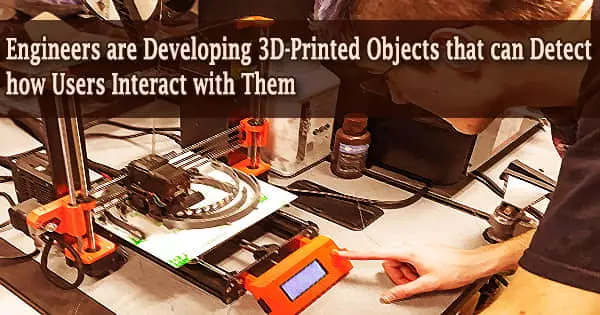MIT researchers have devised a novel approach to 3D print systems that recognize how force is being applied to an item. Because the structures are formed of a single piece of material, they can be prototyped quickly. This technology might be used to 3D print “interactive input devices” in one go, such as a joystick, switch, or portable controller.
The researchers did this by incorporating electrodes into metamaterial structures, which are materials separated into a grid of repeating cells. They also developed editing software to assist users in the creation of these interactive gadgets.
“Metamaterials can support different mechanical functionalities. But if we create a metamaterial door handle, can we also know that the door handle is being rotated, and if so, by how many degrees? If you have special sensing requirements, our work enables you to customize a mechanism to meet your needs,” says co-lead author Jun Gong, a former visiting Ph.D. student at MIT who is now a research scientist at Apple.
Olivia Seow, a graduate student in the MIT Department of Electrical Engineering and Computer Science (EECS), and Cedric Honnet, a research assistant at the MIT Media Lab, were co-authors on the article.
Metamaterials can support different mechanical functionalities. But if we create a metamaterial door handle, can we also know that the door handle is being rotated, and if so, by how many degrees? If you have special sensing requirements, our work enables you to customize a mechanism to meet your needs.
Jun Gong
Senior author Stefanie Mueller, an associate professor in EECS and a member of the Computer Science and Artificial Intelligence Laboratory (CSAIL), and MIT graduate student Jack Forman are also co-authors. Next month, the findings will be presented at the Association for Computing Machinery Symposium on User Interface Software and Technology.
“What I find most exciting about the project is the capability to integrate sensing directly into the material structure of objects. This will enable new intelligent environments in which our objects can sense each interaction with them,” Mueller says.
“For instance, a chair or couch made from our smart material could detect the user’s body when the user sits on it and either uses it to query particular functions (such as turning on the light or TV) or to collect data for later analysis (such as detecting and correcting body posture).”
Embedded electrodes
Because metamaterials are built up of a grid of cells, some of the flexible inner cells stretch or compress as the user exerts a force on the device.
The researchers took advantage of this by developing “conductive shear cells,” flexible cells with conductive filament on two opposing walls and nonconductive filament on the other. The electrodes are the conducting walls.
The conductive shear cells stretch or compress as a user provides force to the metamaterial mechanism by moving a joystick handle or pushing buttons on a controller, and the distance and overlapping area between the opposing electrodes changes.
These changes may be monitored and utilized to quantify the amount and direction of applied forces, as well as rotation and acceleration, using capacitive sensors. The researchers demonstrated this by creating a metamaterial joystick with four conductive shear cells implanted in each direction around the base of the grip (up, down, left, and right).
The distance and area between the opposing conductive walls varies as the user moves the joystick handle, allowing the direction and amount of each applied force to be measured. Those values were transformed into inputs for a “PAC-MAN” game in this example.
A designer might develop customized handle forms and sizes for those with limited grip strength in particular directions by analyzing how joystick users apply pressures. The team also developed a music controller that adapts to the user’s grip.
When a user hits one of the flexible buttons, the structure’s conductive shear cells compress, and the perceived input is transferred to a digital synthesizer. A designer may use this technology to swiftly construct and adjust novel, flexible input devices for computers, such as a squeezable volume controller or a bending pen.
A software solution
This quick prototyping is possible thanks to MetaSense, the researchers’ 3D editor. Users may either manually incorporate sensing into a metamaterial design or have the program arrange the conductive shear cells in the best possible locations.
“The tool will simulate how the object will be deformed when different forces are applied, and then use this simulated deformation to calculate which cells have the maximum distance change. The cells that change the most are the optimal candidates to be conductive shear cells,” Gong says.
The researchers tried to make MetaSense as simple as possible, but printing such intricate structures is difficult.
“In a multimaterial 3D printer, one nozzle would be used for nonconductive filament and one nozzle would be used for conductive filament. But it is quite tricky because the two materials may have very different properties. It requires a lot of parameter-tuning to settle on the ideal speed, temperature, etc. But we believe that, as 3D printing technology continues to get better, this will be much easier for users in the future,” he says.
The researchers hope to develop the algorithms underpinning MetaSense in the future to allow for more complex simulations. They also want to develop systems with a large number of conductive shear cells.
Gong believes that embedding hundreds or thousands of conductive shear cells within a big mechanism might allow for high-resolution, real-time representations of how a user interacts with an object. The National Science Foundation is funding this study.





